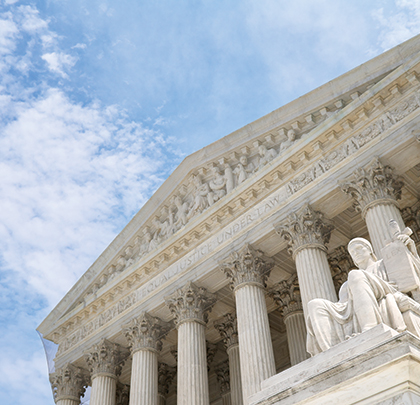The United States District Court (E.D.N.Y.) recently ruled that the Occupational Safety & Health Administration (OSHA) has authority to issue administrative subpoenas duces Tecumseh for documents that fall outside the subject matter of the agency’s initial incident investigation as long as the information is relevant to “any” inquiry that OSHA is authorized to undertake. This is yet another decision increasing the agency’s power to get into potentially incriminating documents, including self and third-party audits that reveal conditions that are in violation of agency standards.
OSHA does have a safe harbour of sorts for audits, and typically will not issue citations related to audit findings, unless the conditions have not been remediated. However, in 2011, a different federal district court in Illinois upheld a similar subpoena for audit and other documents prepared or held by the employer’s insurance company. In that case, the reports were used as evidence against the employer to prove willful violations. Such violations can be the basis for criminal prosecution if a fatal accident is involved, so the stakes can be quite high.
THE CASE
The latest decision, issued in July 2014, in Long Island Precast, Inc. V. U.S. Department of Labor, ruled on the employer’s motion to quash the administrative subpoenas issued by OSHA. The motion was granted in part, and denied in part … effectively splitting the baby.
The employer is a manufacturer of precast concrete products operating out of a 14-acre facility in New York. The local OSHA office received a call about a fall from machinery accident and opened an investigation on-site for 2 days. A worker had fallen over 9 feet while loading concrete catch basins onto a forklift. OSHA was alerted to multiple purported hazards, including:
- employees were climbing the faces of product rather than using a ladder;
- there was no fall protection in place at the time of the worker’s accident; and (
- there were deficiencies in the forklift used at the time of the accident.During the second day of the investigation, the inspector observed an employee riding on the side of a forklift while it was in motion. This second forklift also had safety deficiencies.
THE ISSUE
As a result of the observations and information garnered from employees during the interviews, OSHA decided a subpoena was needed to obtain more information and issued both a subpoena for documents and three subpoenas to compel testimony of witnesses employed by the company. These are different from depositions and document requests issued in the course of post-citation litigation, because in litigation you know what you’ve been accused of and questions and document requests must be relevant to the accusations. Here, by contrast, the agency goes on something of a fishing expedition and then decides what to accuse in a subsequent citation. In this case, the subpoenas demanded information related to both employees and the forklifts. The testimonial subpoenas were for the company president, manager, and sales manager to testify concerning the working conditions at their facility.
The standard for determining the validity of an administrative subpoena (which is issued by the agency itself rather than needing to seek permission of a court) was set forth in a Supreme Court decision, Morton Salt Company, which predates the existence of OSHA. In essence, a subpoena is valid if the inquiry is within the authority of the agency; the demand is not too indefinite; and the information sought is reasonably relevant. The agency may exercise its power “merely on suspicion that the law is being violated, or even just because it wants assurance that it is not.”
Among the documents under dispute were a list of all individuals who had performed work of any kind for the employer: their home information, employment dates, rate of pay, and whether they were full or part time; payroll records for all employees during the specified period; cash disbursement records for all employees, including any paid “off the books,” and significant financial interest data for the company owners. For the forklift, voluminous records on testing, evaluation, training, list of operating personnel, drawings, bills of lading, manufacturer information, and more.
THE RESULT
The employer sought to limit inquiries only to those issues related to the workplace accident. The court shot down that argument and said OSHA has authority to issue subpoenas and that the company overlooked the second-day personal observations of the inspector, which broadened the scope of inquiry. It did, however, find that the first inquiry related to anyone having worked for Precast was overly broad and limited the scope to Precast’s employees.
On the testimonial subpoenas, the employer argued that they were invalid because “witness fees and mileage” were not paid at the time of issuance. This was not disputed by OSHA, but the court held that the relevant rule applied only to court-issued subpoenas and not to agency administrative subpoenas. Therefore, the subpoenas were proper and the officials and managers would have to testify. OSHA would still be liable for payment of the fees in the end. ■
About The Author
Adele L. Abrams, Esq., CMSP, is an attorney and safety professional who is president of the Law Office of Adele L. Abrams PC, a ten-attorney firm that represents employees in OSHA and MSHA matters nationwide. The firm also provides occupational safety and health consultation, training, and auditing services. For more information, visit www.safety-law.com.
Modern Contractor Solutions, December 2014
Did you enjoy this article?
Subscribe to the FREE Digital Edition of Modern Contractor Solutions Magazine!



